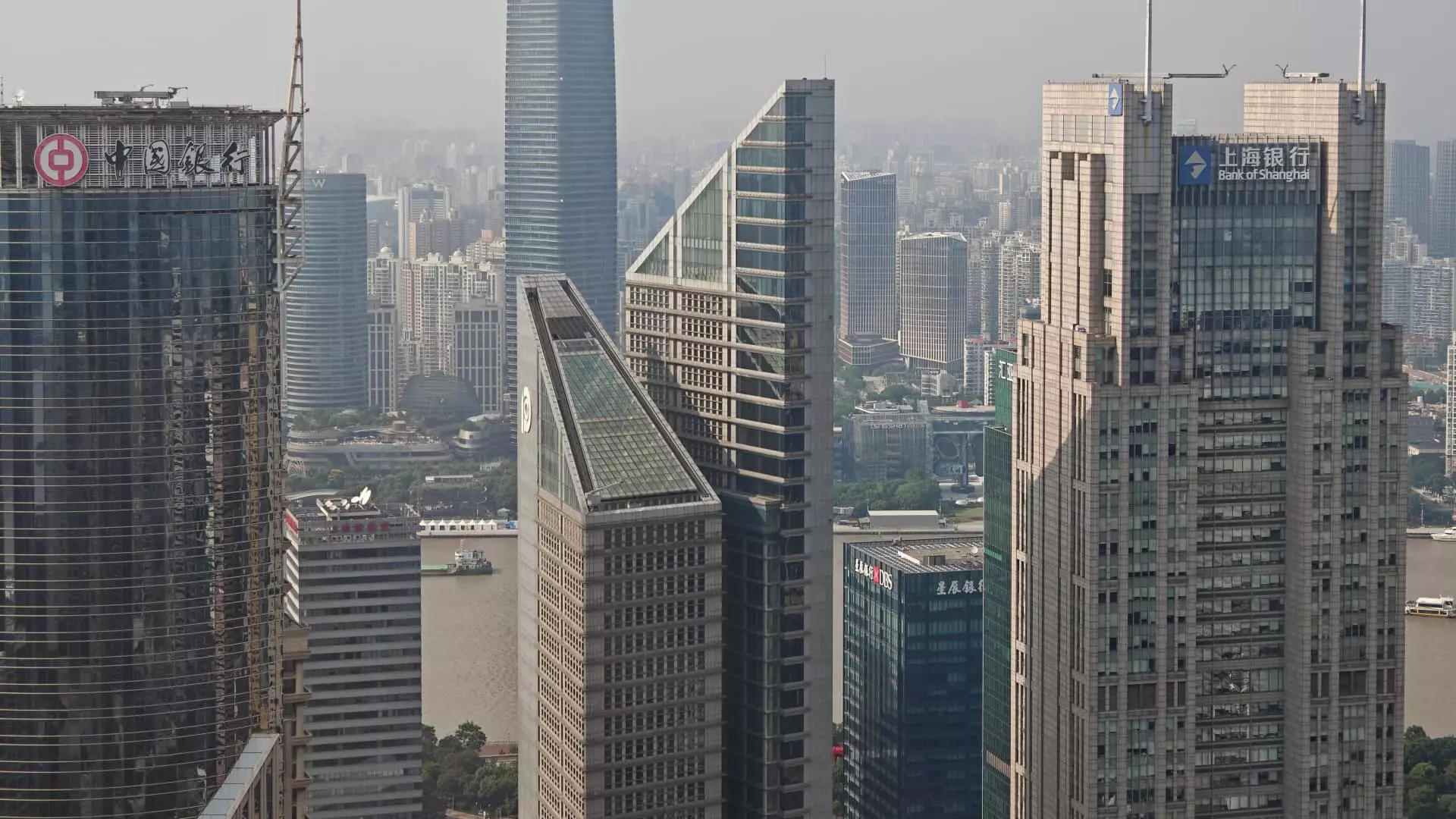Despite the noise surrounding China’s economic prospects and the tumult in global markets, many investors are lulled into a false sense of security. The narrative suggests that little has changed to warrant aggressive bets on Chinese equities. However, beneath this surface calm lies a precarious reality: the Chinese government’s inability—or perhaps unwillingness—to effectively stimulate growth creates a choppy and unpredictable environment. This complacency can be dangerously misleading, especially as the political elite delays decisive policies in critical repositories like the upcoming Politburo meeting. Relying on the veneer of stability might seem appealing in the short term, but history reminds us that market complacency amid geopolitical ambiguity often culminates in sharp corrections.
What is truly alarming is the diminishing confidence in mainland Chinese stocks, especially as policymakers appear increasingly hesitant or unable to catalyze economic rejuvenation. Investors are told to adopt a conservative stance, but this conservatism risks becoming a trap of inaction. The quiet downturn is a signal that the Chinese economy’s structural issues—such as debt levels, corporate shadow banking, and a fragile property sector—are far from resolved. Yet, the narrative remains fixated on dividend plays and high-yield stocks, dismissing the potential for these seemingly safe havens to falter once reality catches up.
The Fallacy of Overreliance on Dividend Yield Strategies
In the face of uncertainty, many investors gravitate towards high-yield dividend stocks, believing they provide a buffer against volatility. Morgan Stanley’s recent endorsement of stocks like PICC P&C and other high dividend payers reveals a broader trend: a flight towards yield, not growth. While it’s understandable that investors seek income streams beyond volatile tech stocks, this approach is fraught with peril in the current environment. High dividend yields often serve as red flags, signaling underlying risks—financial distress, unsustainable payouts, or political meddling.
What’s particularly troubling is the assumption that these dividend stocks will continue to outperform simply because they offer attractive yields. History demonstrates that yield-traps are common, especially when the macroeconomic backdrop remains unsettled. The Chinese government’s support for state-backed banks and insurers can stabilize these sectors temporarily, but it does little to address deeper economic imbalances. A complacent investor might see a 4.5% dividend yield from PICC and dismiss potential downside, cozy in the illusion of safety. This mindset ignores the possibility that dividend cuts could follow economic deterioration or regulatory crackdowns.
The Mirage of Sector Rotation and Market Leadership
The divergence in market performance—Hong Kong stocks rallying roughly 20% in the first half versus the mere 3% gain for the Shanghai Composite—illustrates an underlying disconnect. The enthusiasm for Hong Kong’s tech and high-yield financial stocks demonstrates a misplaced confidence driven by foreign investor optimism and sector-specific narratives. Meanwhile, mainland China’s broader economy remains sluggish, impeded by structural hurdles and policy indecisiveness.
This discrepancy fuels a false sense of security for some investors, who interpret Hong Kong’s gains as an indicator of sustained momentum. But in reality, this divergence points to a market that is increasingly disconnected from its economic foundation, vulnerable to shocks once foreign sentiment shifts or government policies change. The chase after high-dividend yields and the presumed resilience of certain sectors is a gamble—one that ignores the reality of China’s complex financial system and the risks posed by escalating trade tensions and geopolitical instability.
The Risks of Overestimating China’s Growth and Market Resilience
Equally problematic is the rosy outlook on China’s growth prospects based purely on sector-specific performance or high dividend yields. Chinese authorities continue to grapple with slow momentum, and prospects for rapid recovery are slim. The delayed policy response, coupled with ongoing geopolitical friction—exemplified by the looming expiration of tariffs and trade agreements—poses significant downside risks.
Mainland Chinese investors seeking higher returns face paradoxical restrictions on their international investments, which can limit their risk mitigation options. Simultaneously, global investors maintain a cautious stance toward Chinese assets, favoring more reliable markets like the U.S. and Europe. This duality fuels a concerning trend: local investors chase yields domestically, often into fragile or overleveraged companies, while foreign capital conservatively seeks safe havens elsewhere. Such dissonance hints at an underlying fragility within China’s financial ecosystem—one that conservative dividend strategies do little to address and, in some cases, may exacerbate.
Ultimately, the current emphasis on short-term yield plays and market nostalgia obscures the deeper vulnerabilities. The Chinese economy remains a complex puzzle, and the recourse to superficial stability and defensive stocks might prevent investors from recognizing the inherent risks until it’s too late. A more critical approach reveals that, beneath the surface, China’s market is teetering—demanding more than blind faith in dividends and sector-specific optimism.

